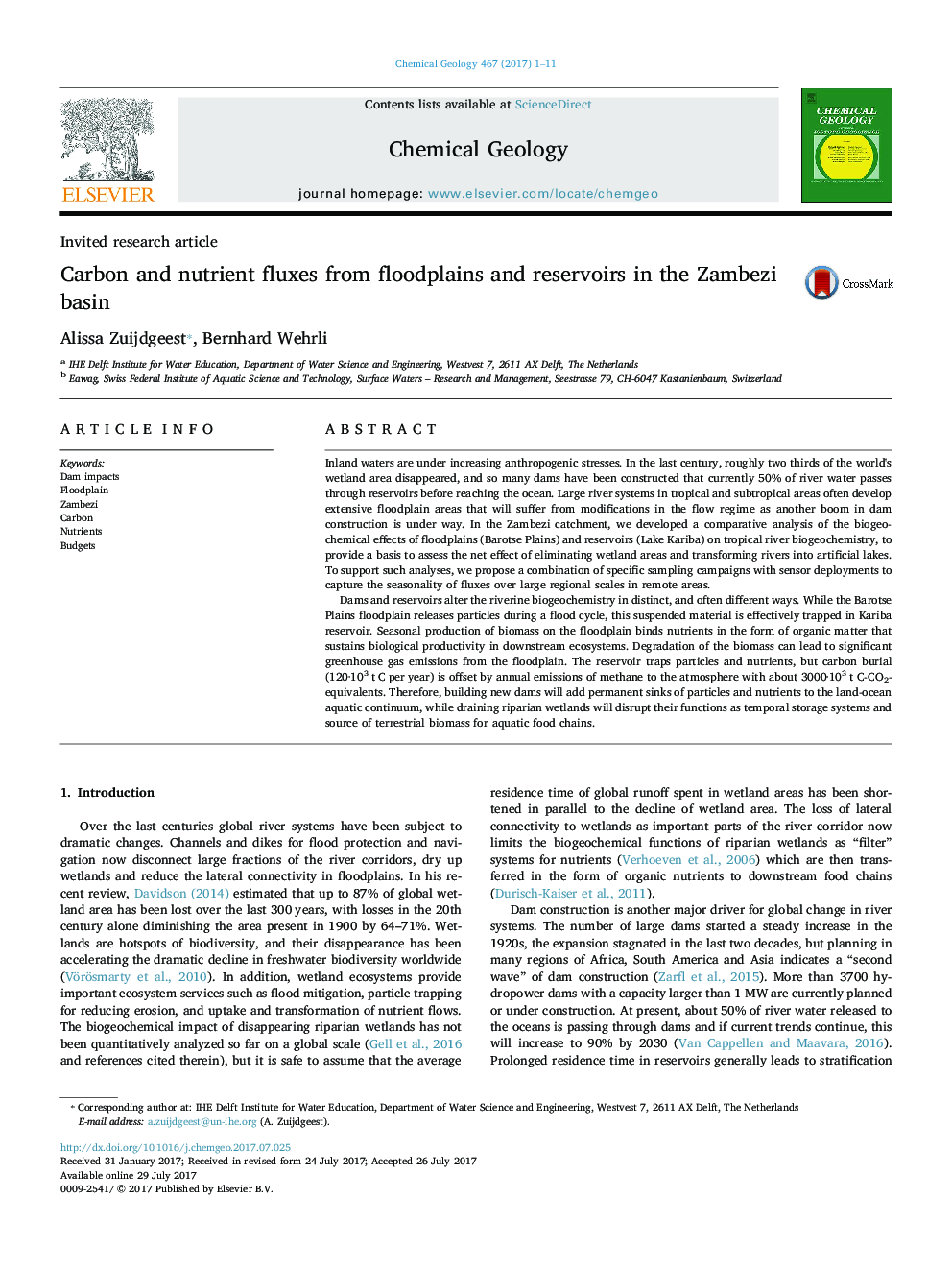| کد مقاله | کد نشریه | سال انتشار | مقاله انگلیسی | نسخه تمام متن |
|---|---|---|---|---|
| 5782675 | 1637507 | 2017 | 11 صفحه PDF | دانلود رایگان |
- Combination of discrete analyses and sensor deployments allows constraining mass balances of wetlands and reservoirs.
- Biogeochemical alterations by floodplains and reservoirs differ in timing and direction.
- Budgeting greenhouse gas emissions requires seasonal observations and catchment-scale approach.
Inland waters are under increasing anthropogenic stresses. In the last century, roughly two thirds of the world's wetland area disappeared, and so many dams have been constructed that currently 50% of river water passes through reservoirs before reaching the ocean. Large river systems in tropical and subtropical areas often develop extensive floodplain areas that will suffer from modifications in the flow regime as another boom in dam construction is under way. In the Zambezi catchment, we developed a comparative analysis of the biogeochemical effects of floodplains (Barotse Plains) and reservoirs (Lake Kariba) on tropical river biogeochemistry, to provide a basis to assess the net effect of eliminating wetland areas and transforming rivers into artificial lakes. To support such analyses, we propose a combination of specific sampling campaigns with sensor deployments to capture the seasonality of fluxes over large regional scales in remote areas.Dams and reservoirs alter the riverine biogeochemistry in distinct, and often different ways. While the Barotse Plains floodplain releases particles during a flood cycle, this suspended material is effectively trapped in Kariba reservoir. Seasonal production of biomass on the floodplain binds nutrients in the form of organic matter that sustains biological productivity in downstream ecosystems. Degradation of the biomass can lead to significant greenhouse gas emissions from the floodplain. The reservoir traps particles and nutrients, but carbon burial (120·103 t C per year) is offset by annual emissions of methane to the atmosphere with about 3000·103 t C-CO2-equivalents. Therefore, building new dams will add permanent sinks of particles and nutrients to the land-ocean aquatic continuum, while draining riparian wetlands will disrupt their functions as temporal storage systems and source of terrestrial biomass for aquatic food chains.
99
Journal: Chemical Geology - Volume 467, 20 September 2017, Pages 1-11
